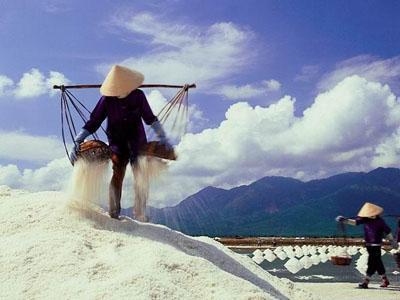

Manufacturers demand high prices for low quality products
The Vietnam Sugar and Sugar Cane Association, while reporting that Vietnam would make out 1.5 million tons of sugar in the upcoming crop, affirming that this would be more than enough to satisfy the domestic market. However, the sale prices of domestic products would be higher than the imports.
A senior executive of Bibica, a sweets manufacturer, said domestic sugar refineries now sell products at 16,000 dong per kilo, while imports are priced at 11,000-14,700 dong per kilo. Meanwhile, the prices of domestic products have been fluctuating heavily, thus making it unable for enterprises to set up their business plan. The gap between the lowest and the highest prices could be up to 30 percent.
Meanwhile, Nestle Vietnam, CocaCola Vietnam, and Perfetti Van Melle have complained that only a few refineries can provide the high quality products they need.
Therefore, though domestic sugar refineries say 300,000 tons of sugar remains unsold, sugar consumers still insist on the quotas for importing 200,000 tons of sugar.
The same situation can be seen in the salt industry. According to the Ministry of Agriculture and Rural Development, Vietnam has 300,000 tons of salt in excess, but it lacks 200,000 tons of salt for industrial production. This has been attributed to the low quality salt and high production cost.
Therefore, the Ministry of Industry and Trade has to grant the quota for importing 102,000 tons of salt in 2012 to satisfy the demand of domestic enterprises.
Enterprises have to follow different steps for making sugar and to make salt. However, there’s a common thing of the two industries--is that the products do not have the quality high enough and the prices low enough to satisfy domestic consumers.
The industries on the ebb?
In 2011, domestic sugar refineries once climbed to 20,000 dong per kilo, while the world’s peak price was 15,000-16,000 dong only.
However, despite the lower competitiveness, domestic sugar refineries still can live well, thanks to the current policies on protecting the local production.
The finance reports by the six big sugar companies in 2011 showed that sugar is one of the industries which have the highest ratios of return on equity of between 40 percent (Bourbon Tay Ninh) and 171. 51 percent (Lam Son sugar).
As for the salt industry, in fact, Vietnam has to import salt for domestic consumption for the last 10 years. However, the problem has become more serious in recent years.
A question has been raised that why state management agencies, which realized the problems of the salt industries 10 years ago already, still have not found any solution to stop the problems?
No one can give the answer to the question when Vietnam would be able to export salt. In the immediate time, Vietnam only dreams to put out enough salt to satisfy its domestic demand. This is really a low goal for a country with 3000 kilometers of coastline and the traditional salt industry.
However, the quota scheme would not exist in the next years, when Vietnam, under the WTO commitments, lowers the import tariffs to zero or five percent. If so, domestic enterprises would have no other choice than having to improve the quality and lower the production costs.
Tran Thuy










(84-63) 3 826042 – (84-63) 3 511142
No 54 Nguyen Dinh Chieu, Ham Tien Central Mui Ne Beach Binh Thuan Vietnam
523 To Hien Thanh District 10 Ho Chi Minh City Vietnam
Ha Long Halong City Quang Ninh Vietnam
A13 Hung Thong 2 Halong City Quang Ninh Vietnam




